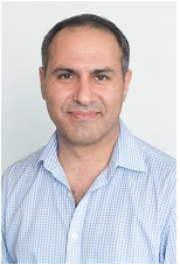
Walid Fakhouri
Associate Professor
The University of Texas Health Science Center at Houston
School of Dentistry
Department of Diagnostic and Biomedical Sciences
Dr. Fakhouri’s research interests focus on identifying epigenetic and genetic factors that cause and contribute to increase the risk of craniofacial disorders including cleft lip and palate, craniosynostosis and micrognathia. His lab uses mouse models and organ cultures to delineate the molecular mechanism of a novel genetic interaction between two transcription factors, IRF6 and TWIST1, that plays a critical role in regulating the epithelial-mesenchymal interaction during oral, facial and skull development. Using biochemical and genetic approaches, his lab investigates how mutations in TWIST1 phospho-sites disrupt formation of craniofacial tissues derived from mesenchymal cells.
Integration of experimental data and bioinformatics for developing computational models are also utilized in Fakhouri’s lab to identify etiologic non-coding DNA variants associated with cancer diseases including head and neck squamous carcinoma. The overall goal of his lab research is to translate their bench findings into the clinic to improve risk assessment and pave the way to personalized medicine.
Potential rotation project:
Title of the Project: Computational modeling of allelic imbalance in cis-overlapping binding motifs of P53 and bHLH family members in cancer
10-week rotation project for a graduate student:
Goal: Decode the genome-wide competitive binding profile of P53 and bHLH family members at cis-overlapping binding motifs (CisOMs) and their role on transcriptional regulation of target genes in three different cancer cell lines.
- Establish three cancer cell line cultures and confirm the expression of P53, P63, P73, cMYC, TWIST1, and HIF-1a by western blot in Human colorectal carcinoma (HCT116), human epithelial beast cancer MCF7 and Human Burkitt lymphoma cells (Raji; CCL-86).
- Perform genomic ChIP for P53 and cMYC in HCT116, MCF7 and CCL-86 cells and send the samples for Next-Generation sequencing to determine the genomic binding profile (ChIP-seq) for P53 and cMYC.
- Validate the ChIP-seq library using ChIPqPCR for detecting the binding of these transcription factors to well-known target genes.
- Participate in analyzing the ChIP-seq data, if available, for each TF in all 3 cancer cell lines.
- Learn how to identify co-occupied regions and CisOMs and corresponding target genes using transcripts written in Python software. The students will get help from the lab members who wrote the transcripts in Python.
Education & Training
PhD, University of Hohenheim, 2002







